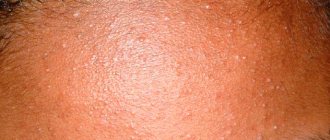Pentalgin extra-gel 5% 50g gel for external use
pharmachologic effect
Non-steroidal anti-inflammatory drugs for external use.
Composition and release form Pentalgin extra-gel 5% 50g gel for external use
Gel for external use – 1 g:
- Active ingredients: ketoprofen - 50 mg;
- Excipients: red capsicum tincture - 40 mg, dimethyl sulfoxide (dimexide) - 30 mg, camphor - 30 mg, peppermint leaf oil - 9 mg, hypromellose - 20 mg, sodium hydroxide - 7.5 mg, ethanol 96% - 350 mg, purified water - up to 1000 mg.
Gel 30 g, 50 g or 100 g in aluminum tubes with polymer bouchons, according to TU 9467-004-32807885-2008.
The tube, along with instructions for use, is placed in a cardboard pack.
Description of the dosage form
Gel for external use is transparent or translucent, homogeneous, yellowish to reddish-brown in color, with a characteristic odor; The presence of opalescence and air bubbles is allowed.
Directions for use and doses
The drug is intended for external use.
The gel should be applied to clean, dry skin. A small amount of gel (3-5 cm) is applied in a thin layer, followed by gentle rubbing into inflamed or painful areas of the body. The drug should be applied 2-3 times a day.
The duration of the course of treatment should not exceed 14 days.
Pharmacodynamics
NSAID, propionic acid derivative. It has analgesic, anti-inflammatory and antipyretic effects. The mechanism of action is associated with inhibition of the activity of COX, the main enzyme in the metabolism of arachidonic acid, which is a precursor of prostaglandins, which play a major role in the pathogenesis of inflammation, pain and fever.
The pronounced analgesic effect of ketoprofen is due to two mechanisms: peripheral (indirectly, through suppression of prostaglandin synthesis) and central (due to inhibition of prostaglandin synthesis in the central and peripheral nervous system, as well as the effect on the biological activity of other neurotropic substances that play a key role in the release of pain mediators in the spinal cord). brain). In addition, ketoprofen has antibradykinin activity, stabilizes lysosomal membranes, and causes significant inhibition of neutrophil activity in patients with rheumatoid arthritis. Suppresses platelet aggregation.
Pharmacokinetics
When taken orally and rectally, ketoprofen is well absorbed from the gastrointestinal tract. Cmax in plasma when administered orally is achieved after 1-5 hours (depending on the dosage form), with rectal administration - after 45-60 minutes, intramuscular administration - after 20-30 minutes, intravenous administration - after 5 minutes.
Plasma protein binding is 99%. Due to its pronounced lipophilicity, it quickly penetrates the BBB. Css in blood plasma and cerebrospinal fluid persists from 2 to 18 hours. Ketoprofen penetrates well into the synovial fluid, where its concentration 4 hours after administration exceeds that in plasma.
Metabolized by binding to glucuronic acid and, to a lesser extent, by hydroxylation.
It is excreted mainly by the kidneys and to a much lesser extent through the intestines. T1/2 of ketoprofen from plasma after oral administration is 1.5-2 hours, after rectal administration - about 2 hours, after intramuscular administration - 1.27 hours, after intravenous administration - 2 hours.
Indications for use Pentalgin extra-gel 5% 50g gel for external use
Articular syndrome (rheumatoid arthritis, osteoarthritis, ankylosing spondylitis, gout); symptomatic treatment of inflammatory and degenerative diseases of the musculoskeletal system (periarthritis, arthrosynovitis, tendonitis, tenosynovitis, bursitis, lumbago), pain in the spine, neuralgia, myalgia. Uncomplicated injuries, in particular sports injuries, sprains, sprains or ruptures of ligaments and tendons, bruises, post-traumatic pain. As part of combination therapy for inflammatory diseases of the veins, lymphatic vessels, lymph nodes (phlebitis, periphlebitis, lymphangitis, superficial lymphadenitis).
Contraindications
For oral administration: erosive and ulcerative lesions of the gastrointestinal tract in the acute phase, “aspirin triad”, severe dysfunction of the liver and/or kidneys; III trimester of pregnancy; age up to 15 years (for retard tablets); hypersensitivity to ketoprofen and salicylates.
For rectal use: history of proctitis and rectal bleeding.
For external use: weeping dermatoses, eczema, infected abrasions, wounds.
Application of Pentalgin extra-gel 5% 50g gel for external use during pregnancy and breastfeeding
Contraindicated for use in the third trimester of pregnancy. In the first and second trimesters of pregnancy, the use of ketoprofen is possible in cases where the potential benefit to the mother outweighs the potential risk to the fetus.
If it is necessary to use ketoprofen during lactation, it is recommended to stop breastfeeding.
special instructions
Use with extreme caution in patients with liver and kidney diseases, a history of gastrointestinal diseases, dyspeptic symptoms, and immediately after major surgical interventions. During treatment, systematic monitoring of liver and kidney function is necessary.
Overdose
If the drug is accidentally used in a dose exceeding the recommended one, the risk of developing overdose symptoms is minimal due to the extremely low systemic absorption of ketoprofen when used externally.
If local side effects occur, discontinue the drug and rinse the application site.
If large quantities of gel are accidentally ingested, systemic adverse reactions characteristic of NSAIDs may occur. It is necessary to lavage the stomach and take activated charcoal.
Side effects Pentalgin extra-gel 5% 50g gel for external use
From the digestive system: pain in the epigastric region, nausea, vomiting, constipation or diarrhea, anorexia, gastralgia, liver dysfunction; rarely - erosive and ulcerative lesions of the gastrointestinal tract, bleeding and perforation of the gastrointestinal tract.
From the central nervous system: headache, dizziness, tinnitus, drowsiness.
From the urinary system: renal dysfunction.
Allergic reactions: skin rash; rarely - bronchospasm.
Local reactions: when used in the form of suppositories, irritation of the rectal mucosa and painful bowel movements are possible; when used in gel form - itching, skin rash at the site of application.
Drug interactions
When ketoprofen is used simultaneously with other NSAIDs, the risk of developing erosive and ulcerative lesions of the gastrointestinal tract and bleeding increases; with antihypertensive drugs (including beta-blockers, ACE inhibitors, diuretics) - their effect may be reduced; with thrombolytics - increased risk of bleeding.
When used simultaneously with acetylsalicylic acid, it is possible to reduce the binding of ketoprofen to plasma proteins and increase its plasma clearance; with heparin, ticlopidine - increased risk of bleeding; with lithium preparations - it is possible to increase the concentration of lithium in the blood plasma to toxic levels due to a decrease in its renal excretion.
When used simultaneously with diuretics, the risk of developing renal failure increases due to a decrease in renal blood flow caused by inhibition of prostaglandin synthesis and against the background of hypovolemia.
When used simultaneously with probenecid, the clearance of ketoprofen and its binding to plasma proteins may be reduced; with methotrexate – the side effects of methotrexate may increase.
With the simultaneous use of warfarin, severe, sometimes fatal bleeding may develop.




